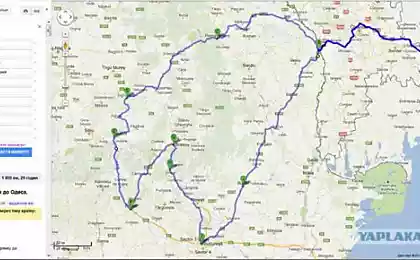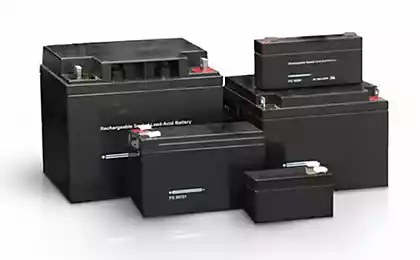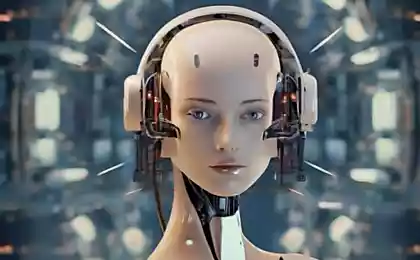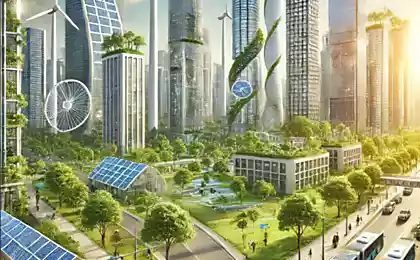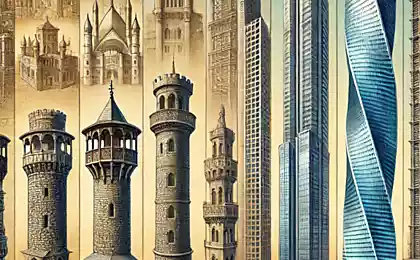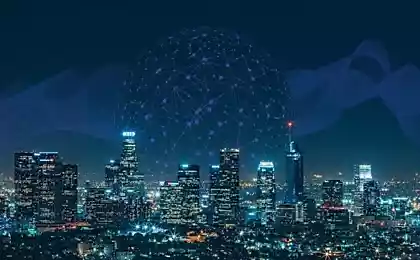500
Six Autonomous high-altitude super-cities
Today's architects invent "city of the future", while technology rapidly changing building materials, and a variety of architectural styles come into fashion and go out of it.
As Central cities become more stressed and contaminated a number of innovative designers offer as a solution to this problem, the concept of Autonomous super-cities, growing upwards rather than outwards, sometimes to a height of three kilometers.
Their projects combine renewable energy, closed farms and residential space for many thousands of people. They are based on the idea that self-sufficient and Autonomous community able to exist outside of the limitations caused by climate change, and at the same time not to strengthen these changes due to the elaborate life support systems.
Skyscraper X-Seed 4000 in Tokyo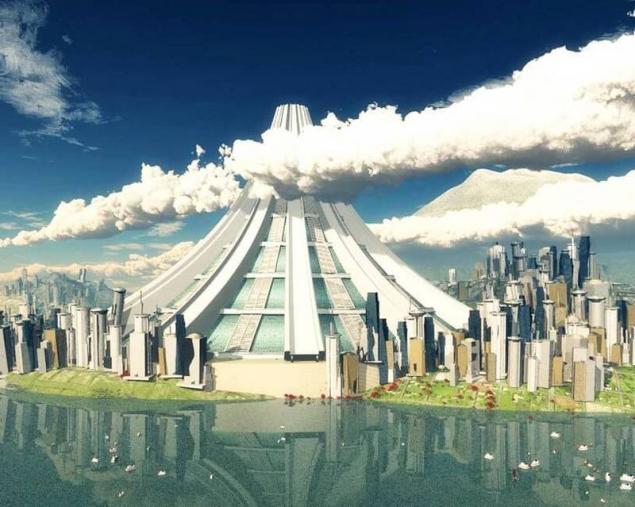
Where on Earth can you find a better location than Tokyo to host the innovative "self-contained" skyscraper, which looks like an illustration from a sci-Fi artworks? This super-high-rise building even the name is quite futuristic "X-Seed 4000". Absolutely "crazy" Japanese project envisages the creation of Islands of a skyscraper in the shape of mount Fuji, with a height of more than 3 kilometers, with 800 floors, and a floor width of 5 kilometers, overlooking the sea, which can accommodate up to a million people.
Designing a skyscraper is a "smart building", developed taking into account the need to protect its inhabitants from the natural consequences associated with the gigantic size of the structure.
The Japanese city of the future "X-Seed 4000" and, in fact, too improbable to exist in reality, and most people are quite aware that he most likely never will be built. This idea rather is intended to draw attention to the company "Taisei Corporation", the oldest construction company in Japan market.
A vertical farm skyscraper "Dragonfly" (Dragonfly) in new York
The creators of this green giant, inspired by the shape of the fragile wings of a dragonfly, and its name he received in honor of this beautiful insect. "Dragonfly" – 132-storey building with a height of about 600 meters, can accommodate 28 different agricultural sites on which to grow fruits, vegetables and grains, and also produce meat and dairy products. The combination of solar and wind energy makes the project of Belgian architect Vincent, Colaba 100 percent Autonomous.
As an imaginary Playground for the implementation of this concept was chosen Roosevelt island in new York. Multidisciplinary building in the fullest sense of the word, allocates office space, research laboratories and living quarters, alternating with farms and orchards.
"Celestial city" in the shape of a Lotus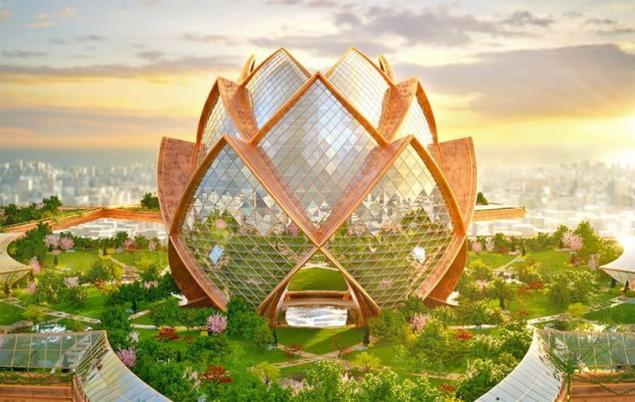
Mounted on the top of a giant structure-a rod of glass and concrete, this Lokosovsky "heavenly city", whether he ever actually built, would represent a quiet serene Harbor with secluded ponds and year round flowering cherry trees. Giant height of the building provides adequate space for living quarters and business offices, fully protected from environmental contamination.
Although the "heavenly city" does not look quite Autonomous, this fabulous oasis London architectural company "Hrama" could peacefully coexist with the surrounding landscape of the metropolis.
The floating "Ecopolis" in the form of lilies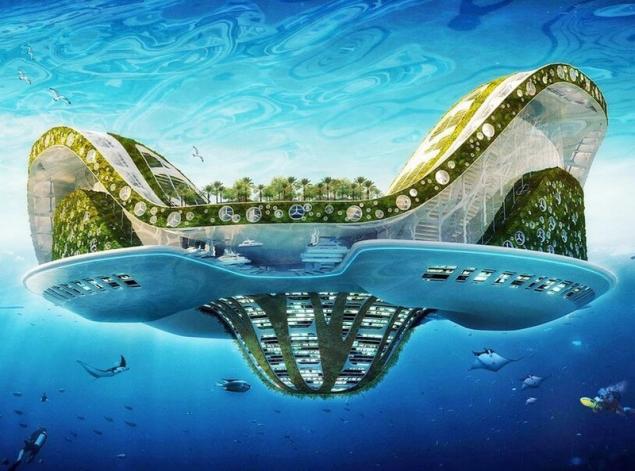
Created by the same architect that new York "dragonfly", project "water Lily" is another example of a standalone complex, the idea of which is inspired by nature. The floating "Ecopolis" emerged as the answer of the architect to the growing problem of climate change, which can cause tremendous coastal space will be uninhabitable for humans in the coming decades. The inhabitants of the flooded coastal areas known as "climate refugees" could live near the coast in huge floating Islands. Each such "water Lily" is able to accommodate up to 50 thousand inhabitants, and numerous floating communities could co-exist along the coastline, providing living space "stolen" raised the sea level and tidal waves.
City-SKAT Jacques Rougerie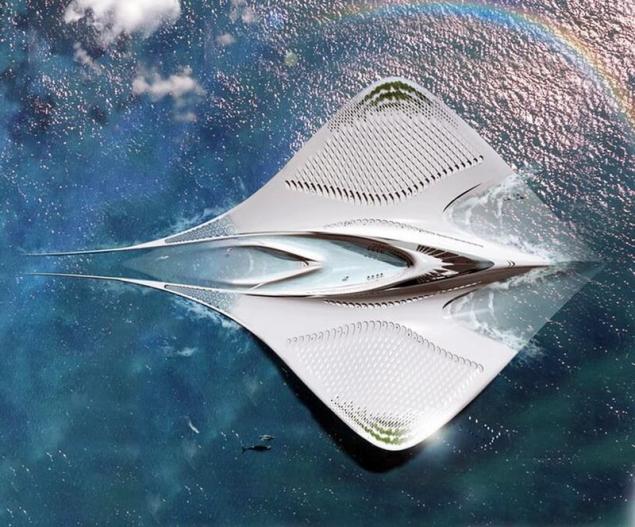
The project "City of Meriens" designed by French architect Jacques Rougerie – a giant floating city, reminiscent of a Stingray "manta", also known under the name "sea devil". This self-contained metropolis could serve as the perfect choice for exploring a favorite natural environment of the architect of the surrounding ocean.
Building dimensions approx 2x4 kilometers can accommodate living space for seven thousand people, professors and students, as well as laboratories, classrooms and playgrounds for sports and recreation. In the past, this well-known architect and visionary created a few other such ocean creatures, including the revolutionary project of the underwater research center "SeaOrbiter", which is already under construction.
Ecological pyramid "Ziggurat" in Dubai, United Arab Emirates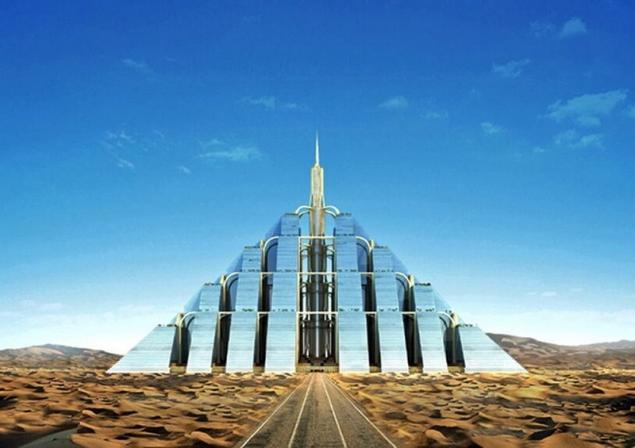
Not to be outdone the Japanese skyscraper-"the millionaire", an environmental research company "Timelinks" from Dubai came up with a giant pyramid with a zero balance of carbon emissions that could also be home to a million people. The name "Ziggurat" design received from Church towers that once existed in Mesopotamos valley. This incredible area of the pyramid is about two square kilometers. Like some other futuristic megaliths, "Ziggurat" is conceived as an Autonomous city, is powered by steam, wind and other renewable sources. published
P. S. And remember, only by changing their consumption — together we change the world! © Join us at Facebook , Vkontakte, Odnoklassniki
Source: gearmix.ru/archives/24790
As Central cities become more stressed and contaminated a number of innovative designers offer as a solution to this problem, the concept of Autonomous super-cities, growing upwards rather than outwards, sometimes to a height of three kilometers.
Their projects combine renewable energy, closed farms and residential space for many thousands of people. They are based on the idea that self-sufficient and Autonomous community able to exist outside of the limitations caused by climate change, and at the same time not to strengthen these changes due to the elaborate life support systems.
Skyscraper X-Seed 4000 in Tokyo

Where on Earth can you find a better location than Tokyo to host the innovative "self-contained" skyscraper, which looks like an illustration from a sci-Fi artworks? This super-high-rise building even the name is quite futuristic "X-Seed 4000". Absolutely "crazy" Japanese project envisages the creation of Islands of a skyscraper in the shape of mount Fuji, with a height of more than 3 kilometers, with 800 floors, and a floor width of 5 kilometers, overlooking the sea, which can accommodate up to a million people.
Designing a skyscraper is a "smart building", developed taking into account the need to protect its inhabitants from the natural consequences associated with the gigantic size of the structure.
The Japanese city of the future "X-Seed 4000" and, in fact, too improbable to exist in reality, and most people are quite aware that he most likely never will be built. This idea rather is intended to draw attention to the company "Taisei Corporation", the oldest construction company in Japan market.
A vertical farm skyscraper "Dragonfly" (Dragonfly) in new York

The creators of this green giant, inspired by the shape of the fragile wings of a dragonfly, and its name he received in honor of this beautiful insect. "Dragonfly" – 132-storey building with a height of about 600 meters, can accommodate 28 different agricultural sites on which to grow fruits, vegetables and grains, and also produce meat and dairy products. The combination of solar and wind energy makes the project of Belgian architect Vincent, Colaba 100 percent Autonomous.
As an imaginary Playground for the implementation of this concept was chosen Roosevelt island in new York. Multidisciplinary building in the fullest sense of the word, allocates office space, research laboratories and living quarters, alternating with farms and orchards.
"Celestial city" in the shape of a Lotus

Mounted on the top of a giant structure-a rod of glass and concrete, this Lokosovsky "heavenly city", whether he ever actually built, would represent a quiet serene Harbor with secluded ponds and year round flowering cherry trees. Giant height of the building provides adequate space for living quarters and business offices, fully protected from environmental contamination.
Although the "heavenly city" does not look quite Autonomous, this fabulous oasis London architectural company "Hrama" could peacefully coexist with the surrounding landscape of the metropolis.
The floating "Ecopolis" in the form of lilies

Created by the same architect that new York "dragonfly", project "water Lily" is another example of a standalone complex, the idea of which is inspired by nature. The floating "Ecopolis" emerged as the answer of the architect to the growing problem of climate change, which can cause tremendous coastal space will be uninhabitable for humans in the coming decades. The inhabitants of the flooded coastal areas known as "climate refugees" could live near the coast in huge floating Islands. Each such "water Lily" is able to accommodate up to 50 thousand inhabitants, and numerous floating communities could co-exist along the coastline, providing living space "stolen" raised the sea level and tidal waves.
City-SKAT Jacques Rougerie

The project "City of Meriens" designed by French architect Jacques Rougerie – a giant floating city, reminiscent of a Stingray "manta", also known under the name "sea devil". This self-contained metropolis could serve as the perfect choice for exploring a favorite natural environment of the architect of the surrounding ocean.
Building dimensions approx 2x4 kilometers can accommodate living space for seven thousand people, professors and students, as well as laboratories, classrooms and playgrounds for sports and recreation. In the past, this well-known architect and visionary created a few other such ocean creatures, including the revolutionary project of the underwater research center "SeaOrbiter", which is already under construction.
Ecological pyramid "Ziggurat" in Dubai, United Arab Emirates

Not to be outdone the Japanese skyscraper-"the millionaire", an environmental research company "Timelinks" from Dubai came up with a giant pyramid with a zero balance of carbon emissions that could also be home to a million people. The name "Ziggurat" design received from Church towers that once existed in Mesopotamos valley. This incredible area of the pyramid is about two square kilometers. Like some other futuristic megaliths, "Ziggurat" is conceived as an Autonomous city, is powered by steam, wind and other renewable sources. published
P. S. And remember, only by changing their consumption — together we change the world! © Join us at Facebook , Vkontakte, Odnoklassniki
Source: gearmix.ru/archives/24790


